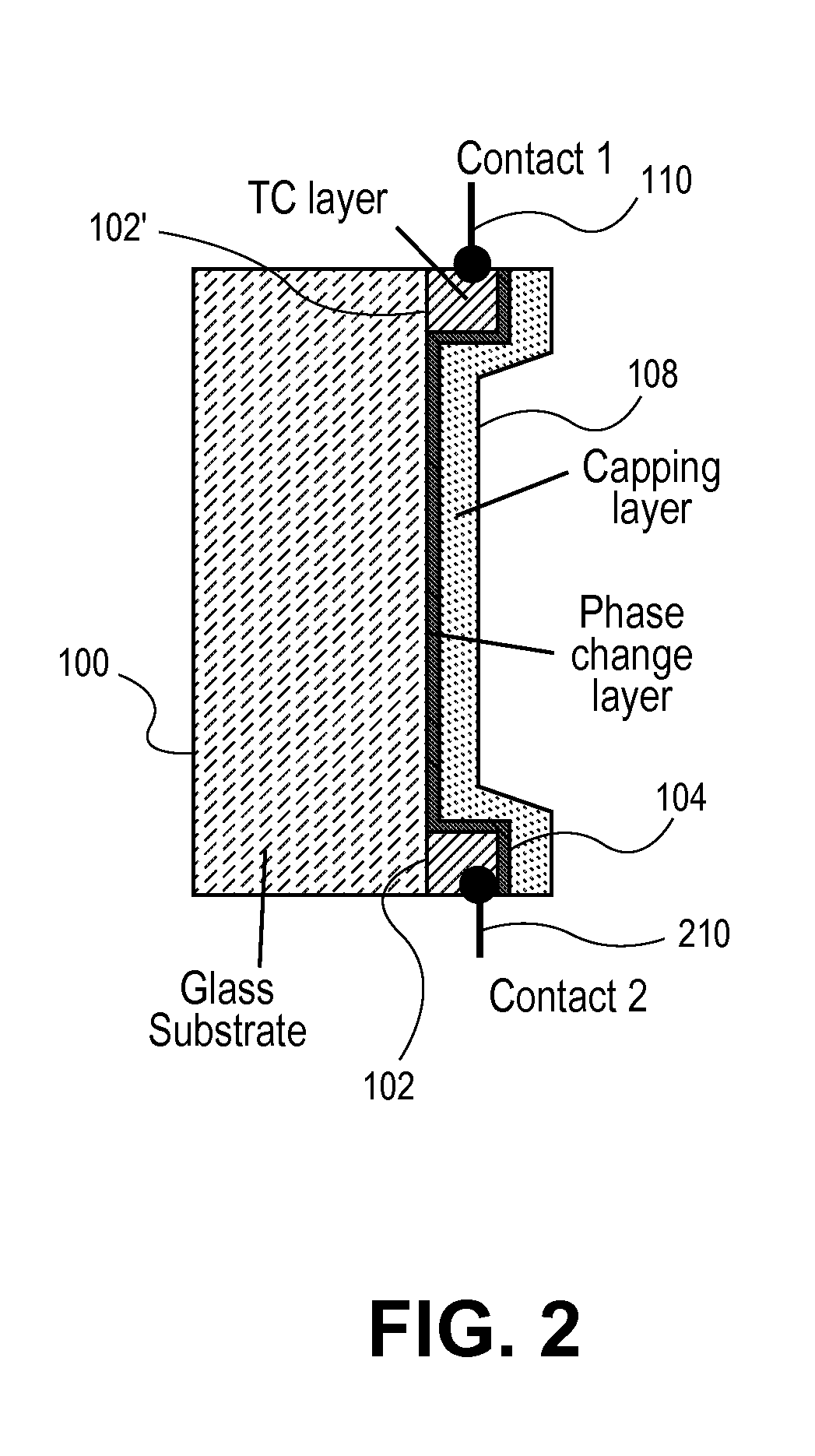Phase change device
a phase change and phase change technology, applied in non-linear optics, instruments, optics, etc., can solve the problems of relatively slow process of switching, large use or preference of buildings, and materials that cannot be controlled by the occupant of a room, so as to achieve rapid change of reflectivity and the effect of reducing the number of times
- Summary
- Abstract
- Description
- Claims
- Application Information
AI Technical Summary
Benefits of technology
Problems solved by technology
Method used
Image
Examples
Embodiment Construction
[0022]These and other objects and advantages of the present invention will become more fully apparent from the following description taken in conjunction with the accompanying drawings.
[0023]Described herein below is the use of a cost-effective, robust, layer system to be deposited on a transparent medium like glass where, for example, it can be incorporated into an affordable, energy-efficient insulated glass unit (IGU), the core of a modern window for residential and commercial buildings. Other potential applications include windows in vehicles, large area displays, roof panels, etc.
[0024]In the current invention, very thin films in the order of 10 nm of phase change materials of the type used in optical storage discs like DVD and Blu Ray are used for large areas where switching of the optical properties may be used to change the reflectivity of windows, such as used in residential and commercial buildings. The different optical properties of the phases are related to very differe...
PUM
 Login to View More
Login to View More Abstract
Description
Claims
Application Information
 Login to View More
Login to View More - R&D
- Intellectual Property
- Life Sciences
- Materials
- Tech Scout
- Unparalleled Data Quality
- Higher Quality Content
- 60% Fewer Hallucinations
Browse by: Latest US Patents, China's latest patents, Technical Efficacy Thesaurus, Application Domain, Technology Topic, Popular Technical Reports.
© 2025 PatSnap. All rights reserved.Legal|Privacy policy|Modern Slavery Act Transparency Statement|Sitemap|About US| Contact US: help@patsnap.com



